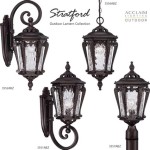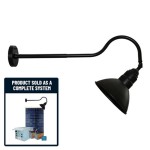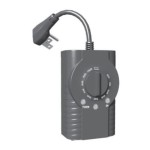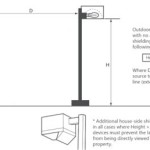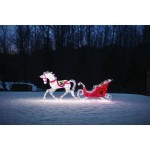Troubleshooting a Non-Functional Outdoor Light Socket
Outdoor lighting plays a critical role in home security, safety, and aesthetics. A malfunctioning outdoor light socket can compromise these benefits, leaving pathways unlit, potentially deterring burglars less effectively, and diminishing the overall curb appeal of a property. Therefore, understanding the common causes of a non-working outdoor light socket and knowing how to diagnose and address them is essential for homeowners and property managers.
Several factors can contribute to an outdoor light socket failing to illuminate a bulb. These range from simple issues like a blown bulb or tripped breaker to more complex problems involving wiring corrosion, socket damage, or ground fault circuit interrupter (GFCI) malfunctions. A systematic approach to troubleshooting is crucial to identify the root cause and implement the appropriate solution.
Key Point 1: Initial Diagnostic Steps and Safety Precautions
Before initiating any troubleshooting process, safety must be prioritized. Electricity poses significant risks, and improper handling can lead to serious injury or even death. The first and most important step is to disconnect the power supply to the affected light fixture. This can be achieved by switching off the corresponding circuit breaker in the electrical panel. It is always prudent to double-check that the power is indeed off using a non-contact voltage tester. This device will indicate the presence of electrical current without requiring direct contact with the wiring, providing an added layer of safety.
Once the power is confirmed to be off, a visual inspection of the light fixture and socket is the next step. Look for any obvious signs of damage, such as cracks, breaks, or corrosion. Check the bulb itself for signs of burnout, such as a blackened filament or a broken glass envelope. A visual inspection can often reveal the problem quickly and avoid unnecessary further investigation.
After the visual inspection, the light bulb should be tested. Even if the bulb appears to be intact, it may still be faulty. The easiest way to test a light bulb is to try it in a known working socket. If the bulb lights up in the functional socket, the problem lies elsewhere within the outdoor light fixture. Conversely, if the bulb fails to illuminate in the working socket, it is likely the source of the issue and needs to be replaced. Keep in mind different types of bulbs such as LED, incandescent, or halogen, may have different failure modes.
If the bulb is not the problem, then the next step is to check the breaker. Even if the breaker doesn't appear to be tripped it should be switched off, then on again firmly. Sometimes a breaker can appear to be on, but still be tripped internally. Then, check the GFCI outlet, if it's connected to the circuit. Push the test button, then reset it.
Key Point 2: Investigating Wiring Connections and Socket Condition
If the initial checks do not resolve the issue, the focus should shift to the wiring connections within the light fixture and the condition of the socket itself. Over time, exposure to the elements can lead to corrosion of the wiring and the socket contacts. This corrosion can impede the flow of electricity and prevent the light bulb from illuminating. Furthermore, loose or damaged wiring connections can also disrupt the electrical circuit.
Carefully disassemble the light fixture to gain access to the wiring connections. Use appropriate tools, such as screwdrivers and wire strippers, to avoid damaging the components. Inspect the wires for signs of corrosion, such as a green or white powdery residue. If corrosion is present, clean the wires using a wire brush or a chemical cleaner specifically designed for electrical contacts. Ensure that all wire connections are secure and properly tightened. Loose connections can cause arcing, which can damage the wiring and the socket and create a fire hazard.
The socket itself should also be thoroughly inspected. Look for cracks, breaks, or other signs of physical damage. The socket contacts, which are the small metal tabs that make contact with the light bulb, should be clean and properly aligned. If the contacts are corroded or bent, they may not be making proper contact with the bulb. Gently clean the contacts with a small brush or a piece of fine-grit sandpaper. If the socket is severely damaged or corroded, it may need to be replaced. Replacement sockets are generally inexpensive and readily available at hardware stores.
When rewiring a light fixture, it is crucial to follow proper wiring practices. Ensure that the wires are connected to the correct terminals and that the connections are secure. Use wire connectors to join wires together and ensure that the connectors are properly sized for the gauge of the wires. Pay attention to the color coding of the wires to ensure that the hot, neutral, and ground wires are connected correctly. Incorrect wiring can create a safety hazard and prevent the light fixture from functioning properly.
Key Point 3: Dealing with GFCI Outlets and Underground Wiring Issues
Outdoor lighting circuits are often protected by ground fault circuit interrupter (GFCI) outlets. A GFCI outlet is designed to detect imbalances in the electrical current and quickly shut off the power to prevent electrical shock. If the outdoor light socket is connected to a GFCI outlet, a tripped GFCI can be the cause of the problem. Inspect the GFCI outlet and if tripped, reset by pressing the reset button. If the GFCI trips repeatedly, it indicates an underlying electrical fault that needs to be addressed.
Common causes of GFCI tripping include moisture intrusion, faulty wiring, and ground faults. Moisture can seep into outdoor electrical boxes and fixtures, creating a path for electricity to leak to ground. This can trigger the GFCI and shut off the power. To prevent moisture intrusion, ensure that all outdoor electrical boxes and fixtures are properly sealed. Use weatherproof covers and gaskets to protect against rain and snow. Inspect the wiring for signs of damage or deterioration. Damaged insulation can expose bare wires, creating a potential ground fault. Replace any damaged wiring to prevent GFCI tripping.
In some cases, outdoor lighting circuits may be powered by underground wiring. Underground wiring is susceptible to damage from digging, rodents, and tree roots. If the outdoor light socket is powered by underground wiring, a damaged underground cable may be the cause of the problem. Diagnosing problems with underground wiring can be challenging and often requires the use of specialized equipment. A qualified electrician can use a cable locator to trace the underground wiring and identify any points of damage. Repairing or replacing damaged underground wiring can be a complex and time-consuming task, and it is generally best left to professionals.
Another factor to consider is the presence of a photocell or timer that controls the outdoor lighting. These devices can fail, preventing the light from turning on even if the bulb, socket, and wiring are all in good working order. Test the photocell or timer by manually overriding it or bypassing it temporarily to see if the light turns on. If the light turns on when the photocell or timer is bypassed, the device is likely faulty and needs to be replaced.
Finally, it is essential to remember that electrical work can be dangerous and should only be performed by qualified individuals. If one is uncomfortable working with electricity or if the troubleshooting process reveals a complex electrical problem, it is best to call a licensed electrician. An electrician has the training, experience, and equipment necessary to diagnose and repair electrical problems safely and effectively. Attempting to repair electrical problems without proper knowledge and training can lead to serious injury or property damage.

Broken Exterior Light Socket Secret Replace Repair Fix

Outdoor Not Working 3 Quick Fixes For Homeowners

Broken Exterior Light Socket Secret Replace Repair Fix

Leviton Rubber Weatherproof Outdoor Light Socket For Medium Base Incandescent Bulbs 124 D The Home Depot

10 Leviton Black 250v 660w Outdoor Light Bulb Lamp Socket 001 55

Leviton Rubber Weatherproof Outdoor Light Socket For Medium Base Incandescent Bulbs 124 D The Home Depot

Leviton Rubber Weatherproof Outdoor Light Socket For Medium Base Incandescent Bulbs 124 D The Home Depot

Leviton Outdoor Incandescent Lampholder 124 D For

Woods 1472wd Outdoor Floodlight Control Socket With Light Sensor Photocell Com

C7 C9 Socket Caps Green Plastic Accessories
Related Posts

